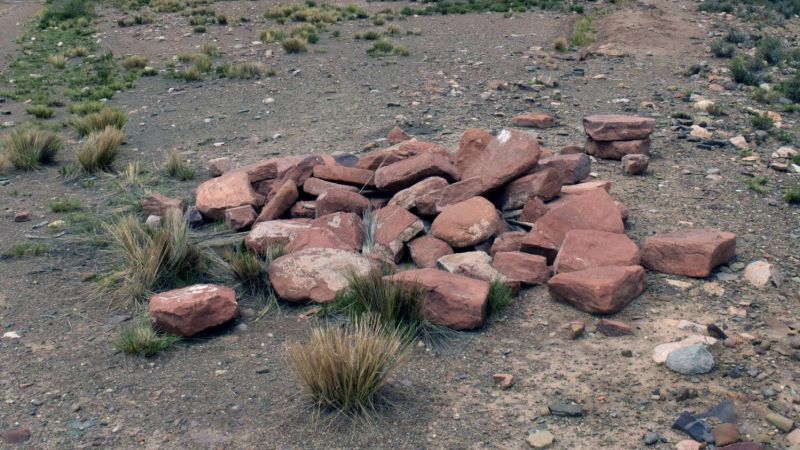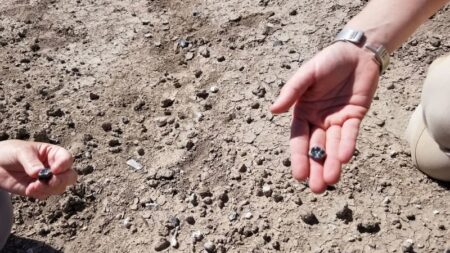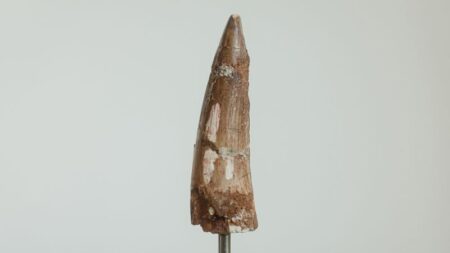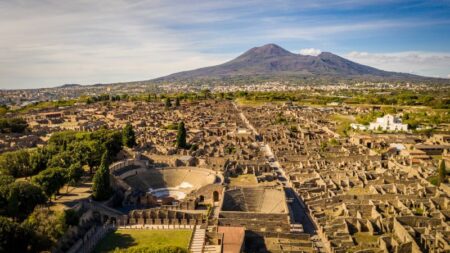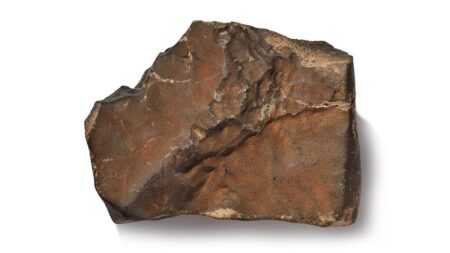Archaeologists have made a remarkable discovery in the Andean highlands of Bolivia, uncovering the ruins of what they believe is the boundary of an ancient temple belonging to the enigmatic Tiwanaku culture, a society that vanished around AD 1000. This ancient civilization has long been a subject of intrigue due to its sudden disappearance, leaving behind a wealth of unanswered questions about its social structure, religion, and interactions with neighboring cultures. This newly discovered temple adds a significant piece to the puzzle, offering insights into the complexities of Tiwanaku’s societal dynamics.
The site of this newfound temple complex, named Palaspata, is situated in the municipality of Caracollo, southeast of the well-known Lake Titicaca. This location deviates from previous research areas that focused on different zones in the quest to understand Tiwanaku’s legacy. The discovery, reported in a study published on June 24 in the journal *Antiquity*, lies approximately 130 miles south of the established archaeological site of Tiwanaku, historically revered as the center of what was once a powerful empire predating the Incas.
Dr. José Capriles of Pennsylvania State University, who leads the research team, noted that Palaspata’s architectural features—including a terraced platform and a sunken courtyard—are strikingly reminiscent of the Tiwanaku style seen in other parts of the region. Capriles remarked on the significance of this discovery, expressing surprise at its existence in this particular location, which was previously considered outside the geographical limits of Tiwanaku’s known influence.
Interestingly, the temple is situated near a prominent Bolivian travel route called the La Paz–Cochabamba Highway, which has historically linked various trade paths used by successive societies, including the Incas. Researchers suggest that Palaspata may have functioned as a crucial hub for trade and religious practices, playing an essential role in the expansion of Tiwanaku’s power and influence across the region.
Despite archaeological research on Tiwanaku sites dating back to the 1860s, knowledge about this intriguing society remains limited. Most of what scholars understand about Tiwanaku has come from examining pottery, remains of domesticated animals, and other ceremonial sites scattered across the Andean highlands. The Tiwanaku civilization first emerged in the Titicaca Basin, an altiplano region characterized by its high elevation, which posed challenges for farming. The inhabitants relied on llama caravans for trade and communication between communities, while Tiwanaku itself became a crucial center for commerce and inter-regional exchanges.
The findings suggest that Tiwanaku may represent a rich tapestry of societal complexities, described by Capriles as a “primary state formation,” indicating a society with intricate social stratification and governance structures that evolved without significant external influence. It is believed that the Tiwanaku peoples began settling around AD 700, with evidence suggesting migration into areas of modern-day southern Peru, northern Chile, and parts of Cochabamba.
The temple of Palaspata was strategically constructed to enhance Tiwanaku’s sociopolitical power in the surrounding areas, primarily through economic control and religious influence. The site is thoughtfully positioned amidst two significant geographic zones of the Andean Highlands, suggesting its dual role in the regional economy and its spiritual landscape. The temple’s design, comprising a perimeter wall made of red sandstone, signifies its importance within the cultural and religious practices of the Tiwanaku.
A comprehensive archaeological project involving drone technology and 3D modeling has allowed researchers to map the site extensively, revealing its expansive dimensions—approximately 125 meters long and 145 meters wide, roughly equivalent to a city block. The temple’s structure indicates it was not merely a place of worship, but also likely a venue for large gatherings, as evidenced by the discovery of Tiwanaku-style pottery used for ceremonial purposes.
While the specifics of Tiwanaku’s spiritual beliefs remain largely speculative, previous findings of stone monoliths and ceramics suggest a rich tradition that aligns with other pre-Inca cultures, focusing on the celestial events integral to their lives. The temple’s orientation, facing west and aligned with the solar equinox, reinforces its religious purpose.
Researchers have postulated several theories regarding the decline of the Tiwanaku civilization, with environmental factors such as drought likely contributing to social unrest. The enigmatic nature of Tiwanaku continues to captivate archaeologists, as many aspects of their societal structure and evolution defy historical expectations of what constitutes a complex civilization. As Dr. Nicola O’Connor Sharratt highlights, the cryptic legacy of Tiwanaku still presents significant challenges and opportunities for new research, further developing our understanding of ancient Andean societies.






